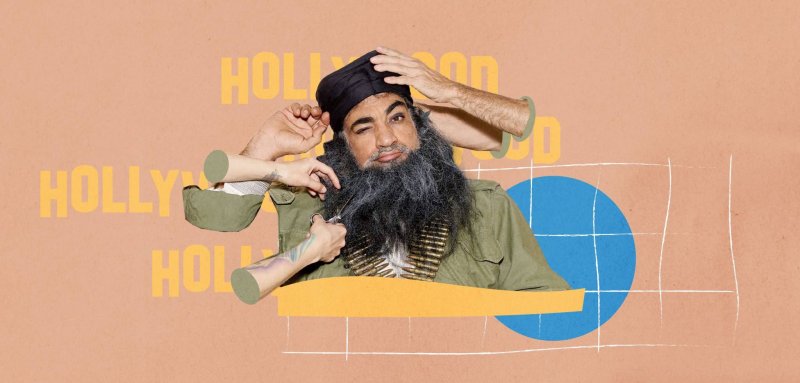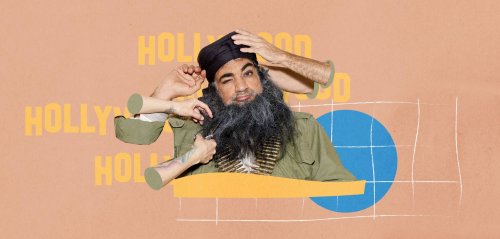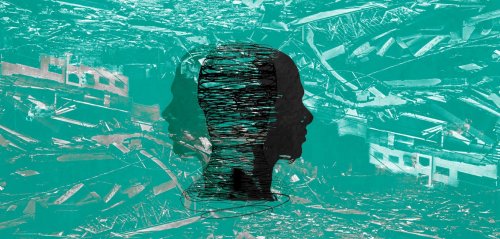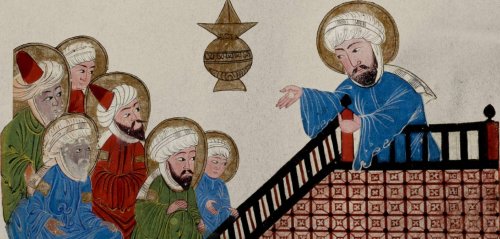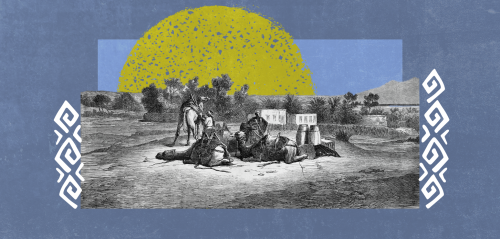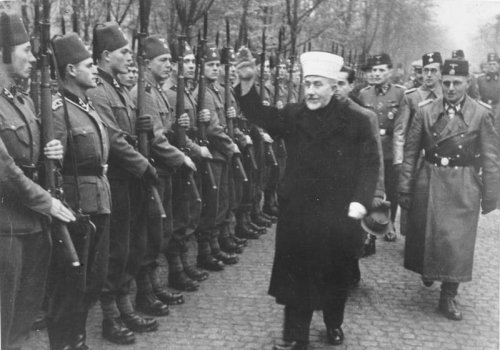The ongoing Israeli war on Gaza has brought to light a number of complex questions that will likely persist for years to come. Among these, is the imagined image of the East and of the Arab people in the Western mind.
In the Time Magazine article Gaza and the End of Western Fantasy by Bruno Maçães, former Secretary of State for European Affairs in Portugal, positioned at the intersection of politics and culture, offers an analytical reading of the war on Gazans. Ultimately, Maçães tears apart the Western (political and cultural) fantasy of Arabs and the East, concluding that it is over.
What is this Western fantasy, and what dangers does it pose to Arabs? To answer this question, we must go back to the origins of the idea of the ‘Other’. Before the formation of the European continent, there was no Other, in the now commonly understood sense. According to Edward Said, Western thinkers considered “Western culture would gain more power and identity clarity by placing itself in opposition to Arabs and the East.” The Arab Other in particular was chosen here.
Renowned film critic Jack Shaheen observed that the majority of films from the 1980s and 1990s which depicted Palestinians failed to portray them authentically, with a number of films promoting the Zionist trope of Palestine as “a land without a People”
If Western power is derived from confrontation with the Other, then it is in Western interest to weaken the Other, colonize it, distort and falsify its history and beliefs, before then stripping it of its humanity.
Western fantasy has played a crucial role in distorting and falsifying the Arab individual and Arab culture. We previously discussed the falsification that has affected Arab and Palestinian history in contemporary American discourse, and we reviewed the role of the American cultural and propaganda machine in solidifying negative stereotypical images of Arabs in the Western collective mind. Hollywood has played the most dangerous role in cementing a horrific image of Arabs. Here, we explore the various images of Arabs in American cinema in order to reveal the many ways Arabs have been dehumanized by Western fantasy.
Jack Shaheen (1935-2017), the American film critic of Arab origin, was the recipient of a grant which enabled him to live in over 15 Arab cities. On his way back to America, he spoke of the terrible injustice towards the Arab people who had generously hosted him just hours earlier. He wondered how American cinema distorted these kind, peaceful people into savages? This is where the idea for his encyclopedic project of The Evil Image Of Arabs In American Cinema took shape in Reel Bad Arabs: How Hollywood Vilifies a People.
The Arabic translation was published in two parts by the National Center for Translation in Cairo. Shaheen spent many years of his life completing the book, in which he critiqued and analyzed over 900 American films from the silent cinema era to the age of films relying on sophisticated technologies. Out of all the films he reviewed, Shaheen was only able to reference twelve films that depicted Arab characters positively, while the overwhelming majority portrayed an extremely negative, barbaric, and aggressive image, considering the Arab individual as a source of threat. Hence, the Arab character warrants being killed without pity or mercy.
If Western power is derived from confrontation with the Other, then it is in Western interest to weaken the Other. Western fantasy has distorted and falsified the Other: the Arab individual and Arab culture.
Who are the Arabs portrayed by Hollywood?
According to Jack Shaheen, throughout history, film directors have labeled Arabs hostile and savage, barbaric, and as religious fanatics obsessed with money. Culturally, Arabs represent the 'Other', responsible for terrorizing civilized Westerners, especially Christians and Jews. Despite the wars, the rises and falls of entire countries and the cultural achievements related to freedoms and human rights that have taken place since 1986, according to Shaheen, “Hollywood’s caricature of the Arab has prowled the silver screen in search of prey. He is there to this day—repulsive and unrepresentative as ever.”
The critic suggests that American directors did not create the stereotypical image of the Arab themselves, but rather inherited it from Europeans, who were the first to spread such caricatures of Arabs. He explains, “In the eighteenth and nineteenth centuries, European artists and writers helped reduce the region to a colony. They presented images of desolate deserts, corrupt palaces, and slimy souks inhabited by the cultural other—the lazy, bearded heathen Arab Muslim. The writers’ stereotypical tales were inhabited with cheating vendors and exotic concubines held hostage in slave markets.” Such portrayals of foreigners and barbarians oppressing and “subjugating harem maidens” were received by audiences as the truth, until the stereotypes became engraved in the Western mind and rooted in European popular culture.
American film directors did not create the stereotypical image of the Arab themselves, but rather inherited it from Europeans, who were the first to spread such caricatures of Arabs.
The author examines the enormous impact of the tales of Arabian Nights: One Thousand and One Nights on the West’s perception of Arab people. By 1979, the stories were translated into more languages than any other book except the Bible, and their impact went beyond just shaping perceptions. They ignited the Western imagination and fantasy of Arabs, which led to the fabrication of many images and stories.
According to Shaheen, in the early 1900s, “imagemakers, such as the Frenchman Georges Méliès, served up images of dancing harem maidens and ugly Arabs.” Arabs rode camels, wielded curved swords, killed each other, while they drooled over European heroines and ignored their own women. Shaheen writes, “In Méliès’ The Palace of Arabian Nights (1905), submissive maidens attend a bored, greedy, black-bearded potentate; a stocky palace guard cools the ruler, fluttering a huge feather fan.”
He points out several themes used by American films in portraying Arab characters. Arab characters in Hollywood must be killed, as they are portrayed as evil and inhuman, deserving to be killed at the hands of the 'noble Western man', by comparison, the guardians of civilization and humanity. Arab Sheikh characters fawned over Western women, were shown to be lazy, spend money frivolously, whether on the Western woman of his desires or a man he wants to kill.
Arab women were often portrayed as the victims of suffering and abuse, whereas men were either lazy and frivolous, or violent and barbaric, deserving to be killed at the hands of the 'noble Western man'
As for Arab women in Hollywood, over 50 of the reviewed films depicted them as victims of suffering. Women were either insulted, posssessed or victims of sexual abuse. 16 of these films included half-Arab women, or silent slaves. Arab women were not shown to marry any Western man, and physical contact between men and Arab women was found to be rare, which led Shaheen to conclude, “It seems that the marriage of an Arab woman to a Western man is taboo in Hollywood. This has only happened in a very small number of films.”
The image of the Palestinian
Jack Shaheen observed that although many films produced in the 1980 and 1990s featuring Arab characters included Palestinians, they failed to portray them authentically, strongly condemning the false image crafted by Hollywood for Palestinians in particular. Hollywood films addressing the Israeli-Palestinian conflict lacked the portrayal of human drama showing Palestinians as ordinary people. Shaheen noted that Palestinians were never shown as the innocent victims of brutal Israeli oppression, films never showed settlers uprooting olive groves and killing Palestinian civilians with their rifles in Palestinian cities. These films also failed to portray Palestinian families fighting for survival under occupation or living in refugee camps, struggling to have a homeland or a passport that bears the name ‘Palestine’.
Just a year after the establishment of the State of Israel, the film Sword in the Desert presented Palestine as a land without a people, echoing the popular Zionist slogan, despite the majority of those living on the land at that time were in fact Palestinians. The myth “There are no Palestinians living in Palestine” was repeated in the 1966 films Cast a Giant Shadow and Judith.
According to Shaheen’s encyclopedia, 7 films, including True Lies and Wanted: Dead or Alive, depict Palestinians as nerve-gas-using terrorists. In over 11 films, including Half Moon Street, Terror in Beverly Hills, and A Date with Death, Palestinians hurt and torture Western children and women.
After he witnessed this deception and distortion, Shaheen wondered whether there existed an unwritten law that Hollywood must portray Palestinians as irrational and evil, while depicting all Israelis as rational and righteous? There is much to question about the lies, misinformation, and falsification of facts, but the ongoing genocide of Palestinians is not an answer.
Raseef22 is a not for profit entity. Our focus is on quality journalism. Every contribution to the NasRaseef membership goes directly towards journalism production. We stand independent, not accepting corporate sponsorships, sponsored content or political funding.
Support our mission to keep Raseef22 available to all readers by clicking here!
Interested in writing with us? Check our pitch process here!
